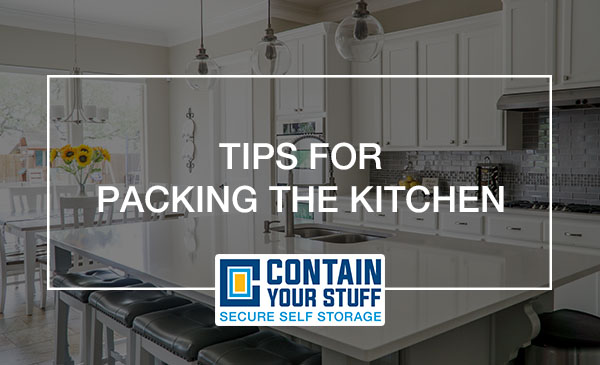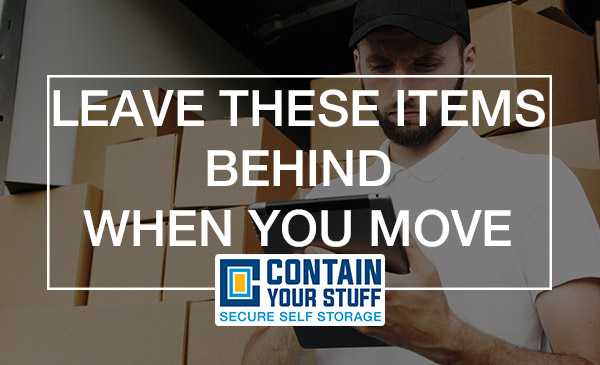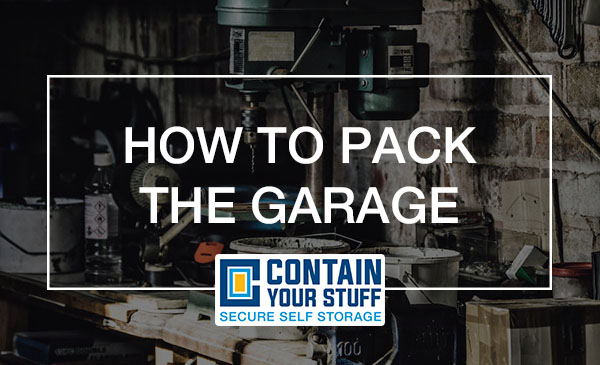
How to Pack The Bedroom
January 18, 2023
Storage For Small Vehicles
February 16, 2023Moving into a new home is exciting, but it can also be stressful. There are so many things to do: buy furniture and household items, find a place for everything, and move in while keeping your sanity intact! I’ve been packing up my kitchen recently, and I thought I’d share some tips that might help you pack yours.
How to Pack the Kitchen
Make a list of what you’ll need access to once you move into your new home.
- Make a list of what you’ll need access to once you move into your new home. Think about all the things that are essential to your cooking, such as pots and pans, dishes and utensils. The list can include anything from mugs to barbecue tongs—anything that might be used in the kitchen.
- Next, make a list of items that aren’t essential but would be nice to have around. This could include things like cookie cutters or wine glasses; it’s helpful when packing these items if they’re packed with similar items in one box so they don’t get lost or broken during the move (and this will also help prevent them from being stolen by friends/family who enjoy borrowing stuff without asking).
Pro-tip: reverse the order of assembly when preparing to pack so that you can dismantle pots, pans, and dishes instead of having to reassemble them.
If you’re moving out of your apartment, it’s likely that your kitchen will be the last room to pack. This can be a time-consuming task, especially if you have a lot of pots and pans. In an ideal world, you would start with the least fragile items and work towards packing up your heaviest appliances like stoves and refrigerators at the end. Unfortunately, sometimes there isn’t enough space or extra time in an already packed schedule.
Here are some tips on how to pack up everything quickly so that your kitchen is as organized as possible when moving day arrives:
- Reverse the order of assembly when preparing to pack so that you can dismantle pots, pans, and dishes instead of having to reassemble them.
- Label each box with a number so it can be easily identified during unpacking (this is especially helpful if there’s more than one person doing this job).
Use dish towels, clothes, or paper towels as packing material.
- Use dish towels, clothes, or paper towels to wrap up glasses and dishes.
- Use paper towels to cover silverware.
- Wrap pots and pans in clothes or paper towels before packing them in the box.
Gather all boxes and suitcase from around the house; you might not have as much as you think.
- Take a walk around the house and find all of your boxes. You might not have as much as you think, but it’s always good to check.
- Look in the garage, attic, basement and under the stairs for boxes that may have made their way in there over time.
- And don’t forget to look in your car!
Collect recyclable boxes from local businesses or offices.
When it comes to packing your kitchen, the best thing you can do is collect boxes from local businesses and offices. There are two ways to do this:
- Use a recycling bin. If you don’t have a recycling bin in your home, ask whoever does if you can use theirs (most people will let you). Once they’re full, take them out and set them by the curb for pick-up. The next morning, when they’ve been collected and taken away by garbage trucks, go pick up whatever’s left behind! This is how I got all of my boxes for my last move—and it was actually pretty fun because no one expects to have their stuff recycled. It’s also kind of funny when someone throws out something valuable or sentimental at work or school that ends up being scooped up by yours truly!
- Look for businesses with large amounts of packaging waste sitting around waiting for recycling day (this normally happens once per week). If there aren’t any businesses near where you live that meet this description, then ask people who work nearby if they can help out; most people won’t be able to refuse such an innocent request—they’ll probably just tell their coworkers about it later on anyway!
Pack larger items first.
- Pack larger items first.
- Pack items that you will need to access first (e.g., in the kitchen, utensils and small appliances) in one box and then place smaller boxes inside this box to organize your items. The space left over can be used for storing cutlery and other small items that are not very heavy or bulky.
- Leave room for foodstuffs when packing kitchen equipment, such as pots, pans and utensils; this way you can bring along some stuff that might not fit into a smaller box but is crucial for your cooking routine abroad!
- Pack items that you will need to access later last so they won’t get lost at the bottom of the pile of boxes – make sure these are labelled too so they don’t get mixed up with other things during unpacking time (especially if you have lots of friends helping out).
Label boxes clearly, and also label their contents!
Use stickers, tape, markers, label makers and printer labels to label your kitchen boxes.
- Stickers are a quick way to label boxes and can be purchased at any office supply store.
- You can also use packing tape to create labels for your boxes.
- Markers are another great option for labelling your kitchen items; however, use felt tip markers instead of permanent markers so that you don’t leave unwanted marks on the contents inside the box when it’s time to unpack them!
- If you’re going all-in on this organization project, then it may be worth investing in some type of printer or label maker that will allow you to create professional looking labels for each box as well as its contents!
Thinking about what you’ll need in your new home before you pack will make the initial unpacking process easier.
When you’re moving into a new home, it’s natural to want to pack your kitchen and accessories first. However, it is important to remember that you may need room for other things in the boxes.
For example, if you’re moving into an apartment with limited space and no storage unit, then consider packing last minute items like dishes and cooking utensils last so they can be put away immediately after unpacking. If there are boxes of dishes from previous owners remaining in the house when you move in, these might need to be packed first because they’ll need to be out of sight before any furniture is brought in; however, this decision should be based on whether there are other pieces of furniture already present (such as tables).
If you’re going to be moving soon, it might be a good idea to start packing your kitchen. Keep in mind that this is only the first step in preparing for your big move; there are many more things that need to be done before you can actually move out of your house or apartment! But if you’ve already started the process with this guide, then we hope it has helped make things easier on both sides of the spectrum—from unpacking at your current home while preparing for the next phase of life and packing up everything into boxes and suitcases while planning ahead so they arrive safely at their destination. Grab a self storage unit for us if you need some time to organize!




